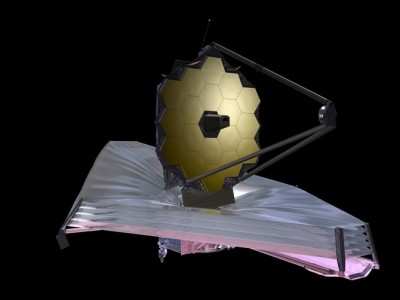Mon, Jun 18, 2012
MIRI Was Developed By A European Consortium And NASA's JPL
The first of four instruments to fly aboard NASA's James Webb Space Telescope (Webb) has been delivered to NASA. The Mid-Infrared Instrument (MIRI) will allow scientists to study cold and distant objects in greater detail than ever before. MIRI arrived at NASA's Goddard Space Flight Center in Greenbelt, MD, May 29. It has been undergoing inspection before being integrated into Webb's science instrument payload known as the Integrated Science Instrument Module (ISIM).

Assembled at and shipped from the Science and Technology Facilities Council's Rutherford Appleton Laboratory in the United Kingdom, MIRI was developed by a consortium of 10 European institutions and NASA's Jet Propulsion Laboratory (JPL) in Pasadena, CA, after having been handed over to the European Space Agency.
MIRI will observe light with wavelengths in the mid-infrared range of 5 microns to 28 microns, which is a longer wavelength than human eyes can detect. It is the only instrument of the four with this particular ability to observe the physical processes occurring in the cosmos.
"MIRI will enable Webb to distinguish the oldest galaxies from more evolved objects that have undergone several cycles of star birth and death," said Matt Greenhouse, ISIM project scientist at Goddard. "MIRI also will provide a unique window into the birth places of stars which are typically enshrouded by dust that shorter wavelength light cannot penetrate."
MIRI's sensitive detectors will allow it to observe light, cool stars in very distant galaxies; unveil newly forming stars within our Milky Way; find signatures of the formation of planets around stars other than our own; and take imagery and spectroscopy of planets, comets and the outermost bits of debris in our solar system. MIRI's images will enable scientists to study an object's shape and structure.
The most powerful space telescope ever built, Webb is the successor to NASA's Hubble Space Telescope. Webb's four instruments will reveal how the universe evolved from the Big Bang to the formation of our solar system. Webb is a joint project of NASA, the European Space Agency and the Canadian Space Agency. (Image provided by NASA)
More News
Aero Linx: Model Aeronautical Association of Australia MAAA clubs are about fun flying, camaraderie and community. For over 75 years, the MAAA has been Australia’s largest fl>[...]
Touchdown Zone Lighting Two rows of transverse light bars located symmetrically about the runway centerline normally at 100 foot intervals. The basic system extends 3,000 feet alon>[...]
“Discovery and innovation are central to our mission at Virgin Galactic. We’re excited to build on our successful record of facilitating scientific experiments in subor>[...]
How To Get A Story On Aero-TV News/Feature Programming How do I submit a story idea or lead to Aero-TV? If you would like to submit a story idea or lead, please contact Jim Campbel>[...]
Student Pilot Reported That During Rotation, “All Of A Sudden The Back Of The Plane Kicked To The Right..." Analysis: The student pilot reported that during rotation, “>[...]
 ANN's Daily Aero-Linx (05.02.24)
ANN's Daily Aero-Linx (05.02.24) ANN's Daily Aero-Term (05.02.24): Touchdown Zone Lighting
ANN's Daily Aero-Term (05.02.24): Touchdown Zone Lighting Aero-News: Quote of the Day (05.02.24)
Aero-News: Quote of the Day (05.02.24) ANN FAQ: Contributing To Aero-TV
ANN FAQ: Contributing To Aero-TV NTSB Final Report: Cirrus Design Corp SR20
NTSB Final Report: Cirrus Design Corp SR20



